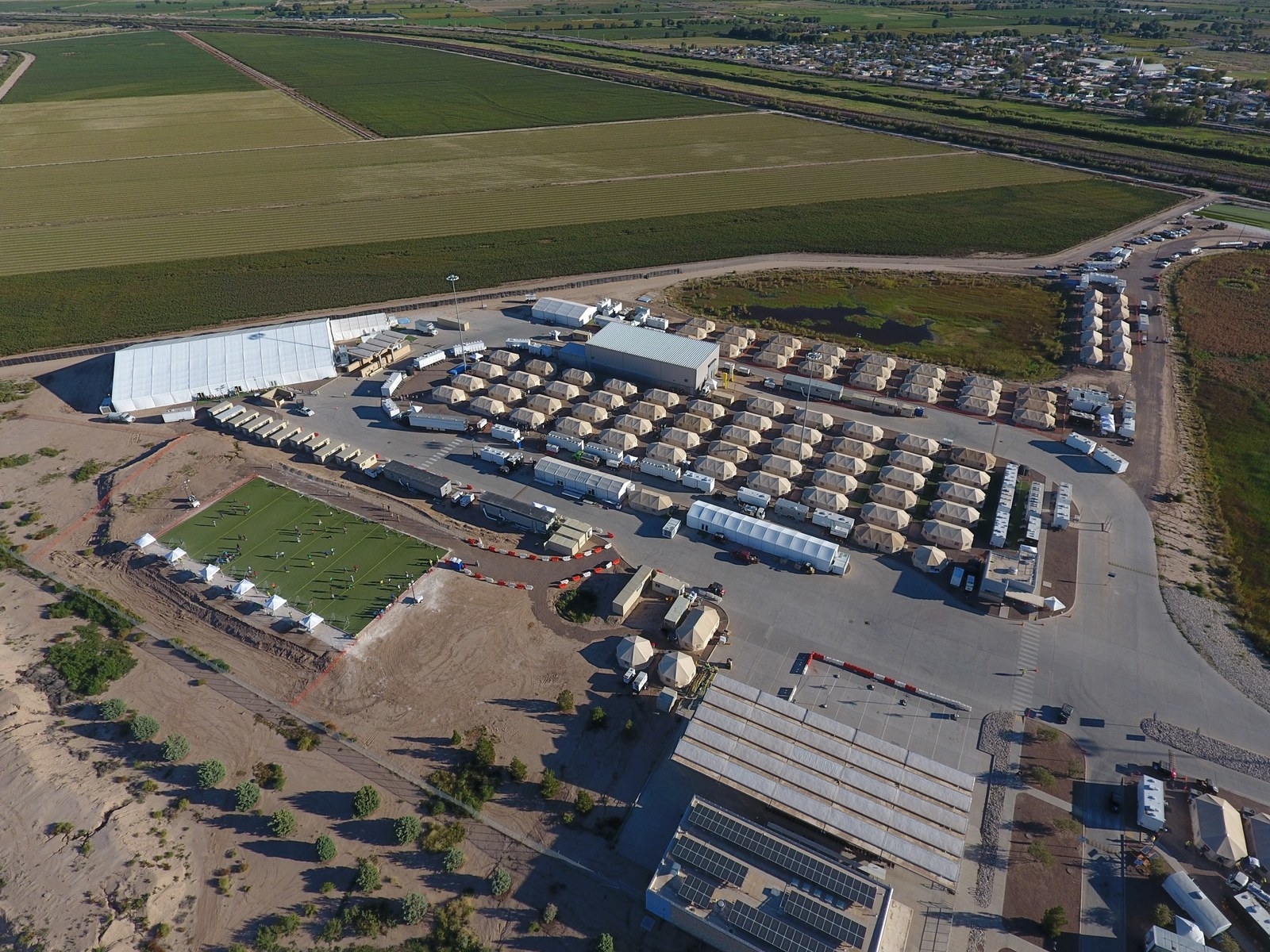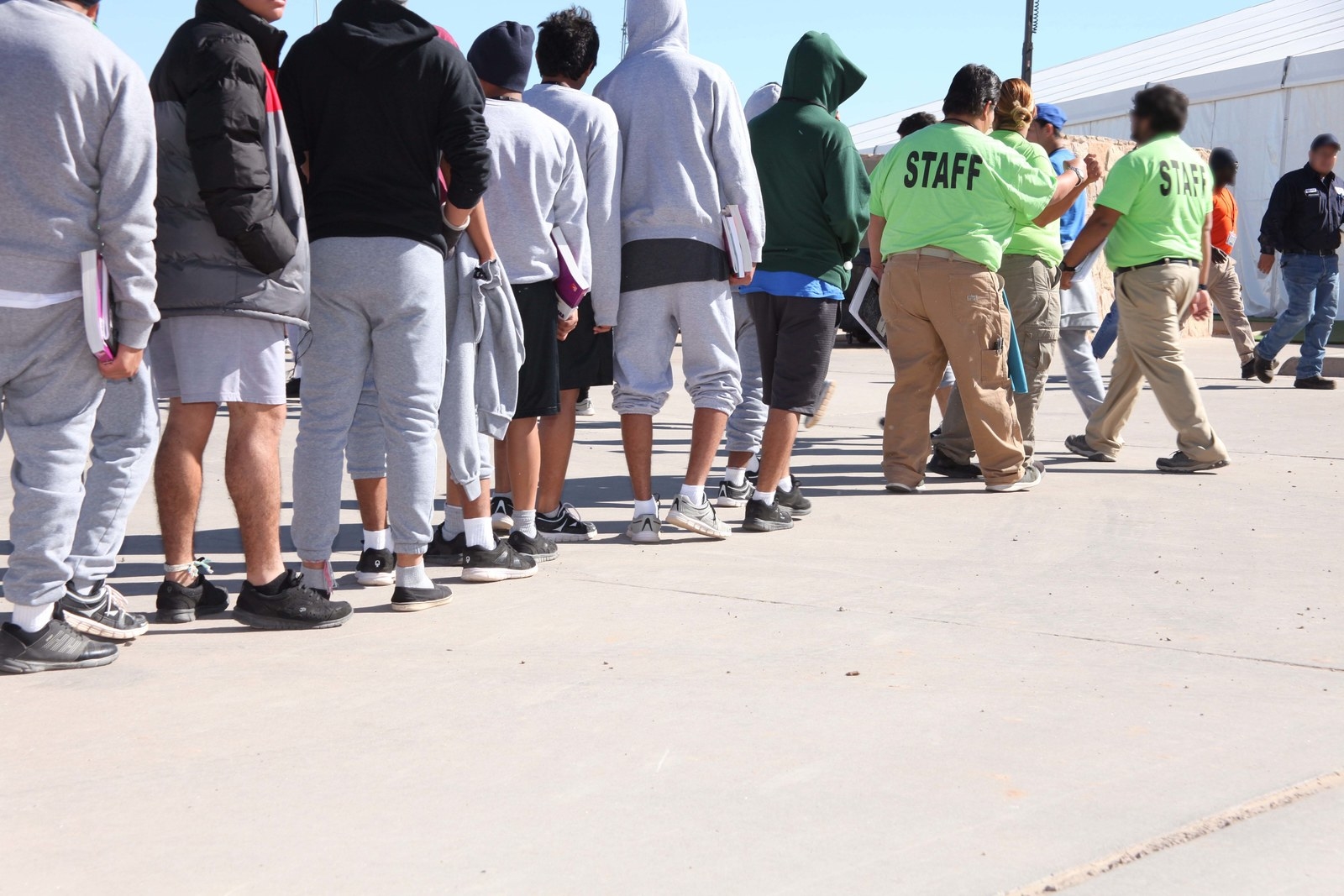
Scott Shuchart writes in the Washington Post:
The meeting was way overdue, and it wasn’t going well.
It was May 21. The Department of Homeland Security, where I worked as a senior adviser in the Office for Civil Rights and Civil Liberties, had been making a show of prosecuting undocumented immigrant parents for weeks, cleaving them from their children without paying much attention to where the family members went or setting up any procedure for tracking and reuniting them later.
My office had played a central role, for years, in Homeland Security’s treatment of families and children. But when a cadre of Trump administration political appointees put the family separation plan into motion, neither they nor the career staff in the immigration enforcement agencies under DHS consulted with the civil servants in my office. When media reports throughout April and May led us to understand what was going on, we had urgent questions: What exactly was the policy? What had DHS’s front-line agents in Customs and Border Protection (CBP) and Immigration and Customs Enforcement (ICE) been told to do? How had the department assessed the risk that litigation would interfere with the policy? How was this justified in light of our treaty obligations toward refugees? And why was the department pushing out transparently misleading — or simply false — statistics to justify these steps? We were obliged, under the law that created our office, to register our objections that the administration was knowingly violating people’s rights.But the top political appointee at the May meeting — John Mitnick, the experienced, Senate-confirmed general counsel — and his deputy seemed confused that the civil rights office would see any cause for concern. The administration was claiming in public that a policy of prosecuting all border crossers didn’t target families as such, so it could not present any legal issues. And if there were any issues, they hadn’t been raised ahead of time.
That was false. The next day, I called around to colleagues who confirmed that there had been multiple interagency phone calls and documents, involving the State and Justice departments as well as DHS, making clear that lawyers throughout the government worried that deliberately separating families could violate migrants’ rights under humanitarian treaties or U.S. law. But the political appointees simply didn’t listen. And a few weeks later, I came across an April 24 memo — signed by the very officials I had met with a month later — acknowledging, but dismissing, the legal risks. Even worse, it encouraged indicting immigrants specifically because doing so would justify separating families, arguing that the government’s “legal position” on “separating adults and children through the immigration process . . . is likely strongest [when] separation occurs in connection with a referral of an adult family member for criminal prosecution.”
Mitnick, through a DHS spokeswoman contacted by The Washington Post, declined to comment for this story. That spokeswoman, Katie Waldman, said: “The Department of Homeland Security does not disclose or comment on privileged legal advice provided by our attorneys to the Secretary or other officials, and therefore, unfortunately, we are not in a position to refute false narratives put forward by a former employee. We note, however, that in order to address the crisis at the border, the Trump Administration made a decision to enforce long-standing U.S. law and refer for prosecution under 8 U.S.C. § 1325(a) adults who crossed into the United States illegally. As we have repeatedly stated, the policy was to enforce the law, not to separate families.”
She also sent a statement from Cameron Quinn, the Trump appointee who runs the office I worked in: “I participated in the meeting in question. It was a brief, general discussion, and Mr. Mitnick made it clear that he desired to work collegially with our office.”
By law, our job in that office was to ensure that “the civil rights and civil liberties of persons are not diminished” by DHS’s programs. When it became clear that the department would be tearing families apart and — thanks to incompetence, dishonesty and sheer disinterest — had no reasonable plan to put them back together, I realized I could not do that. A few weeks after that meeting, I quit my job and left public service, carrying a profound sense of failure.
Children and parents from Central America, part of a caravan trying to reach the United States, wait to apply for asylum in Mexico at a checkpoint in Ciudad Hidalgo on Oct. 20. (Ueslei Marcelino/Reuters)
The government formally announced the family separation policy in April. The point was clear, as several officials later admitted: By threatening to separate their children, the administration hoped to deter Central American asylum seekers from coming here in search of humanitarian protection. Then-Homeland Security Secretary John Kelly had suggested the practice during a CNN interview in March 2017, and it had been gaining support in the White House since then.
Many senior civil servants at DHS believed that the policy violated the civil and human rights of migrants. (Many of them, like me, were trained and licensed attorneys, though our role was to give policy advice, not legal advice.) Crossing the border to surrender immediately to authorities and claim asylum is protected by the United Nations refugee protocol signed by the United States. Even for families outside that protection, the substantive due process principle in the Constitution suggests that it is illegitimate to threaten to harm or abscond with someone’s children to deter the commission of a misdemeanor. (First-time unlawful entry is the lowest level of federal crime.)
During past surges in border crossings, such as in 2005, 2006 and 2007 under George W. Bush and 2014 under Barack Obama, the civil rights office was central to planning humane and effective protections for migrants as they were arrested, detained, screened and, if they passed initial “credible fear” screenings, placed into immigration court proceedings. But Trump appointees such as White House adviser Stephen Miller, Attorney General Jeff Sessions, DHS Secretary Kirstjen Nielsen, CBP Commissioner Kevin McAleenan and U.S. Citizenship and Immigration Services (USCIS) Director L. Francis Cissna — along with many deputies, assistants and enablers inside ICE and CBP who dreamed up the “zero tolerance” policy — didn’t consult career experts like me: not when it was being considered last year, not when it was unveiled and not for the critical weeks afterward, even as we begged to share our legal and policy analyses.
My job was to ensure that the government did not violate clearly established individual rights, and the Trump administration was pushing a policy whose principal aim was to do just that. My colleagues and I identified a number of constitutional provisions and related case law holding that parents had rights to due process that could limit the ability of the government to separate them from their children for civil immigration violations. That meant that once parents served their typically short criminal sentences for crossing the border illegally, they should have been reunited with their children. Our research also suggested that threatening to detain children separately, and threatening civil detention generally to deter future conduct, was probably unconstitutional.
In our capacity as a gateway for public complaints about DHS, my office was analyzing hundreds of incidents of family separation, including dozens sent over by career staff at the Department of Health and Human Services, which was taking custody of children who had been separated from their parents. We noticed early that CBP and ICE weren’t providing HHS with proper records to allow families to be reunited or pursue their immigration cases jointly. We recommended that officials tell parents promptly and clearly where their children were going, how they could be reached and how family members could get them out of government custody while the parents were detained. Perhaps most urgently, we tried to ensure that children with serious disabilities were not thrown into a system unprepared to care for them. As allegations emerged of chaotic separations and deliberate lies — parents being told that their children were headed to a shower when they were instead placed in another agency’s custody — we started drafting guidelines and training for the Border Patrol agents on the ground. Above all, we tried to ring the alarm that the legal, strategic and human dimensions of the policy hadn’t been thought through, needed fast improvement and posed a massive liability for the government.
My colleagues and I learned while reviewing internal DHS documents through April and May that CBP had, the previous fall, undertaken a pilot project of prosecuting parents with small children who crossed the border illegally near El Paso, leading to a wave of separated families. But when we asked the acting second-ranking CBP official about it, he denied having any information.
That was also false. The formal memo to Nielsen from CBP, ICE and USCIS recommending the family separation policy had justified it on the basis of this same El Paso project, including misleading statistics that had already been debunked by Vox when DHS tried to pass them off to reporters.
Every attempt to raise civil rights concerns led nowhere: a lengthy staff memo to my boss, the top civil rights official; efforts to explain in meetings the toll on our staff from investigating complaints of children and parents who had been separated, without any communication to get back together; multiple efforts to schedule, and reschedule, a briefing that James McCament, the head of the DHS Office of Policy, had promised near the start of the crisis but never convened. Civil servants advanced recommendations for mitigating the worst of the harm; we suggested improving record-keeping, giving separated parents and children better information, and permitting more regular phone calls among families.
After hundreds of complaints filed by migrant children, parents and advocates on their behalf, my office finally managed to arrange a meeting in June with CBP managers to understand how they were separating families and to present ideas about how to do it in a more humane way, if they insisted on doing it. My notes from the meeting record my boiling frustration with the absurd answers we received. Border Patrol agents dismissed our offer to train them on how to speak to children after ripping them from their families. “No,” we were told, “many of our agents are parents themselves. They are very empathetic to the child’s needs and will know what to do.” Had officials in Washington directed agents to record family members’ names and information, so they could later be reunited? “I think we sent an email.” Can we see the email so we know what agents were directed to do? “Um, I’d have to find it.” (The official never did.) Is there a written policy on how to determine whether children have suffered trauma or have some other condition that would mean separating them from their parents would do too much harm? “No, we have no need for written policy. It’s simply ingrained in law enforcement culture.”
The culture ingrained at CBP, though, is one where the Border Patrol’s union opened its podcast (“The Green Line”) with the oath of the Night’s Watch from “Game of Thrones” — the pledge of a band of warrior monks to protect a magical kingdom from an army of ice zombies. If federal law enforcement agents see Central American children as the moral equivalent of the frozen undead, we can’t expect them to understand intuitively how to detain and process them humanely without training, guidance and leadership. That’s why my colleagues and I were pushing for record-keeping, communication and other policies that Trump appointees ignored. (Representatives of the Border Patrol union did not immediately return requests for comment from The Post.)
A U.S. Border Patrol agent acknowledges a family that had illegally crossed the Rio Grande from Mexico in Fronton, Tex., on Oct. 18. (Adrees Latif/Reuters)
It would be easy to see all this as part of the federal sausage-making, the usual intentional delays and risk-managing memos that bureaucrats deploy. But this level of dishonesty and subterfuge was unusual. This month, the DHS inspector general released a report making clear that the incompetence in managing family separation was pervasive, from a lack of planning, to “information provided to alien parents [that] resulted in some parents not understanding that their children would be separated from them,” to false public claims of having a “central database” of parents and children.
The Department of Homeland Security is filled with excellent, dedicated public servants. But it also has enormous authority and the power to enforce thousands of laws well or badly. Its leaders have a responsibility to give their people orders that they can competently and ethically execute, and the tools and guidance to do so. The family separation crisis represented a new frontier in weaponizing DHS’s authority, and its borderline competence, to disastrous effect. Front-line officers weren’t given enough guidance, and their managers in the field didn’t do enough to help them figure it out. Only the administration’s naivete in failing to predict the bipartisan public outrage kept it from being worse.
But most culpable were the high-level appointees, unwilling to take ownership of what they’d decided to do; lying to their staffs in the expectation that nobody really cared what happened to poor Central American kids; cynical about the notion that most of us who swear an oath to uphold the Constitution actually mean it. I cast about for more to do, but within a month of that June meeting, I realized there was no way to keep my oath and my job.
I quit.
Outlook • Perspective
Scott Shuchart was a senior adviser at the Department of Homeland Security’s Office for Civil Rights and Civil Liberties from 2010 to 2018. He is a non-resident senior fellow at the Center for American Progress. Follow @scottshuchart
*********************************************
























